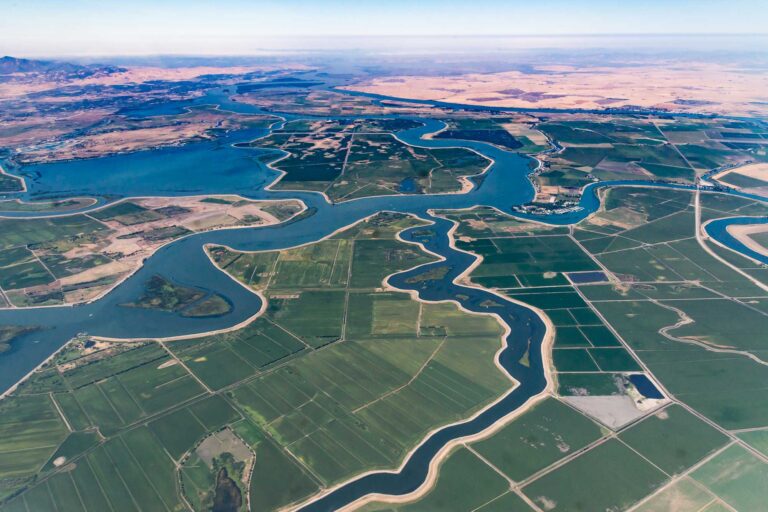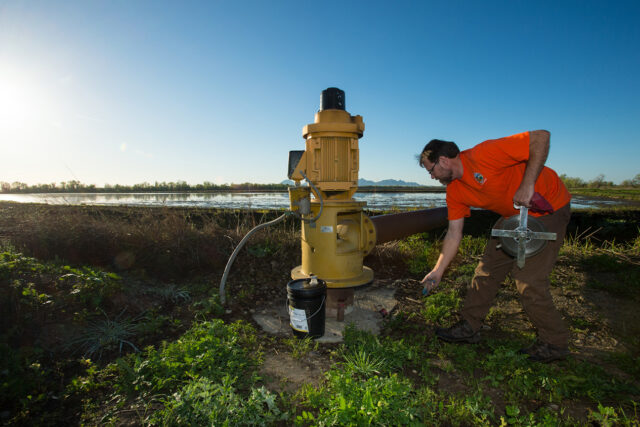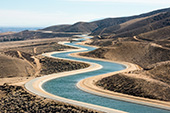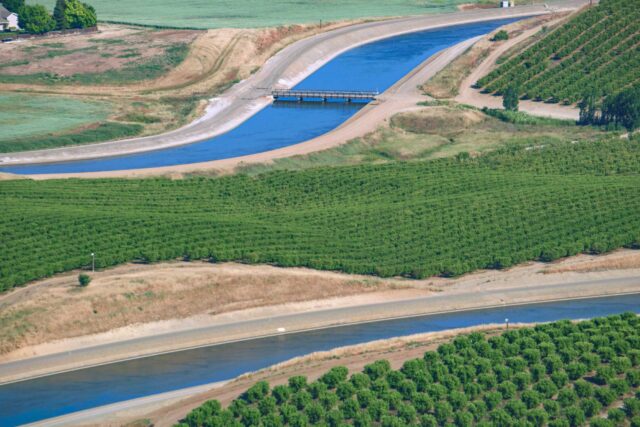Water rights reform has long been the third rail in California politics—that is to say, untouchable. But that may be changing. Recently, the Planning and Conservation League Foundation convened a group of water rights experts to make recommendations to improve the system, and their work is receiving a lot of attention. We spoke with two members of the group—Richard Frank, professor of environmental practice and director of the California Law & Environmental Policy Center at the University of California, Davis, and Jennifer Harder, professor of law at University of the Pacific—about the proposals.
What are the most important changes to California law recommended by the group? Was there unanimous support within the group for all of the recommendations?
Jennifer Harder: All recommendations were unanimous within the group—we didn’t rank or prioritize them. We focused on practical changes to accomplish three goals: to implement the human right to water; to address climate change; and to address fish extinctions.
Richard Frank: The State Water Resources Control Board, which has been charged with overseeing and enforcing California’s water rights system, doesn’t have all the legal tools it needs to effectively carry out its public trustee responsibilities. That’s a key focus of our recommendations: to give the Water Board tools and technology to monitor and conduct real-time reporting of water diversions. Many other western states have already implemented this: it’s not rocket science. It’s ironic that California, which prides itself on innovation, has such an antiquated water rights system. It’s out of touch with changes in California’s water supply and environment, which are occurring at warp speed.
JH: There’s a lot that’s good in our water rights system. We have the state constitutional standard for reasonable use, the public trust doctrine, and the priority system, which in some ways works very well. But in other areas we don’t do well: for example, as Rick explains, we need to have a much better understanding of who diverts and stores how much water, and when. We need to better protect drinking water and instream flow.
Which stakeholders would benefit and which would suffer negative consequences if your proposals went forward?
JH: We felt the need to get away from “winners” and “losers.” Water stakeholders are all-inclusive: communities, tribes, environment, suppliers, farmers, etc. Water law is required to account for the diverse needs of all water users.
For example, our report recommends giving the State Water Board clarified tools for verifying the validity of water rights. That’s a win for everyone who is lawfully using water.
What are the next steps? Do you expect that the legislature and governor will generally support your recommendations? Will any likely be enacted into law?
RF: Our recommendations have been provided to senior staff at the California legislature and the governor’s office. We hope this work will trigger a necessary discussion about what can and should be done to reform and update California’s water rights system. Most of the recommendations will require legislative changes. Given the scope of our current water crisis, these are quite reasonable and incremental steps to modernize our system and make it work better for everyone.
We’re in the midst of a megadrought—the worst in the last 1,200 years, according to scientists. We don’t know whether the current water year will be wet, dry, or somewhere in between. If you listen to and believe climate scientists, this is the new normal. California’s population is growing, and there will be increased fighting over a shrinking supply of water. This will challenge all three branches of the state government. We’re past the time for open-ended conversations: we’re in crisis stage. We need leadership from the state government to reform the water rights system in timely way and not allow business as usual to continue. We don’t have the luxury of delay.
JH: A lot is good in our water rights system, but our report recognizes that some targeted changes are needed. If we were starting from scratch, we’d set aside water for the environment from the beginning. Today, we’re trying to carve out instream flow from water already being used, and that creates discord. Speaking for myself, I think there needs to be a mechanism to identify supplies for the environment clearly, give them priority, and manage them to the best effect, so that the rest of the water rights holders—municipal, hydropower, agriculture, etc.—can use water with increased certainty.
Additional thoughts?
JH: When it starts raining, political attention on water starts to fade. That’s an enormous mistake. California is a state of precipitation extremes, and those extremes are intensifying due to climate change. If we find ourselves in a lull, that’s a critical time to be talking about reform.
RF: In California, we’re dealing with 21st-century water supply issues using 20th-century water infrastructure and 19th-century water law. California has shown it can take bold, effective action on climate, energy, and any number of other policy areas. We have the tools and solutions in our hands—we just need the political will and wisdom to use them before it’s too late.





